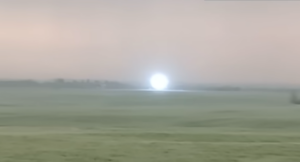Carvings on trees are not just graffiti. For centuries, local people have used them to share stories and traditions. Some of these ancient messages still exist.
Author Steve Magee said that “trees will tell their secrets to those that tune in.” Throughout history, etchings on trees have communicated secrets, stories, and traditions. Whether it is couples expressing their love, strangers leaving cryptic messages, or ancient people connecting with their dead, tree carvings, also known as arborglyphs, afford us glimpses of the past.
Aboriginal Arborglyphs
New South Wales in Australia is an arborglyph hotspot. The two main Aboriginal groups in the area, the Gamilaroi and the Wiradjuri, have used them to mark coming of age ceremonies and death. In the early 1900s, anthropologists launched an expedition to New South Wales to document and preserve the arborglyphs. They found that in a ceremony called “bora”, the Gamilaroi carved intricate designs of circles, spirals, diamonds, or animals to symbolize the transition into manhood, as well as to mark sacred burial grounds.
The anthropologists recorded over 7,500 carved trees. Some trees were photographed, others were uprooted and physically put on display in Australian museums. In the 1930s and 1940s, several carved trees were removed from important Aboriginal sites such as Banarway and Collymongle.
The last bora ceremony took place in the 1890s. Aboriginal communities were moved to reservations and encouraged to abandon their indigenous practices for the European way of life.
More recently, Museums Victoria returned a carved cypress pine from 1876 to the Gamilaroi community. It was carved to mark a burial area and its return was celebrated with an elaborate smoke ceremony.

Museum Victoria recently returned carved cypress tree from 1876 back to its Aboriginal community. Photo: Gordon Burrow (1917)/State Library of New South Wales
Ritual carvings
The Wiradjuri people carved trees to commemorate the passing of important members of their community. They carved trees that faced the person’s grave. The carvings were believed to provide a gateway to the “sky world”. The designs displayed curvilinear lines, chevrons, or circles.
In 1817, explorer and surveyor-general of Australia, John Oxley, stumbled across a burial site in Condobolin, Wiradjuri Country. The local people had cleared a mound of earth of vegetation and carved two nearby trees to alert strangers of its spiritual significance. Oxley was the first European to record Aboriginal tree carvings.

Illustration of Wiradjuri burial ground. Illustration by GE Evans (1817)
In 1845, another explorer, Sir Thomas Mitchell, led an expedition deep into tropical Queensland. His party included a Wiradjuri navigator named Yuranigh. Yuranigh was an integral member of the expedition and was held in high regard. When Mitchell learned of Yuranigh’s death in 1850, he traveled to his burial site, marked by five carved trees with geometric patterns. Mitchell erected a headstone as a European tribute to Yuranigh’s importance. This is the only Aboriginal grave to feature this combination.
New World Arborglyphs
On the other side of the world, ancient tree carvings have turned up in Oregon, Idaho, and Nevada. Many of the carvings on aspen trees came from the Basques, who settled in the United States during the 19th century. They had emigrated from the Pyrenees to the U.S. in search of a more prosperous life. Many became shepherds. They wandered the forests for months at a time and carved their thoughts into aspen trees to pass the time, a practice they brought over from Europe.

A carving from 1925. Photo: Boise State University Special Collections and Archives
The carvings were not as complex as those of the Aboriginal Australians. The Basque carvings mainly consisted of dates, names, and animals. Academics have used them as a means of evaluating how their mindsets changed over time.
Later, political satire replaced images of rural life. For example, with the outbreak of the Spanish Civil War, the Basque used carvings to express their hatred for Francisco Franco. The carvings have been documented in photographs. Aspen trees are softwoods and only have a lifespan of around 85 years. They are also frequently victims of wildfires. It is very rare to come across a carved aspen dating back to the 1800s.






